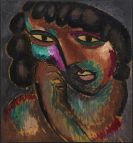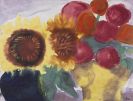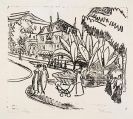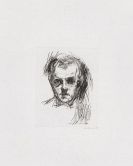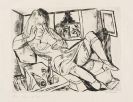
Paul Cézanne
Aix-en-Provence
1839 -
Aix-en-Provence
1906
The Fench painter Paul Cézanne was born in Aix-en-Provence on January 19, 1839. He attends the Collège Bourbon in Aix-en-Provence as of 1852, and is a very close friend of his class mate Émile Zola, the later author, a friendship that will last a number of years until they finally break. Following his father's wish he begins to study law at Aix-en-Provence university as of 1859. At the same time he takes drawing classes at the municipal drawing school in Aix.
Cézanne goes to Paris in 1861, following his own wish to be a painter. He applies at the École des Beaux-Arts, however, he is rejected. He then attends the Académie Suisse where he meets Camille Pissarro.
Paul Cézanne spends a lot of time in the Louvre to copy the old masters. His early works are pastose and raw, the colors thickly applied. He takes on portentous and gloomy subjects.
In 1872 Cézanne follows Camille Pissarro's invitation to Pontoise, where they paint together in the open air. Inspired by Pissarro, Paul Cézanne's style changes, his palette becomes brighter. He joins the impressionists and exhibits with them in 1874 and 1877, he returns to Aix-en-Provence in 1879, where he cuts his own path as a painter, lonely and struggling.
Cézanne's work comprises landscapes, still lives, portraits of friends and common people from his surroundings. He takes on the motif of the nude in the open air, the bathing, in a varying manner.
Due to working all by himself, the remoteness of the Provence and Cézanne's firm belief that his style is not understood, he only exhibits at a very late point in his life, success comes little by little. The art dealer Ambroise Vollard shows his first one-man show in Paris in 1895, his works are in the Paris Salon d'Automne for the first time in 1903.
Paul Cézanne dies in Aix-en-Provence on October 22, 1906. An appraisal of his works begins only after his death. Paul Cézanne belongs to one of the most important painters from the early days of Modernism. His artistic approach to reality is of fundamental importance for later generations of artists. The colors and forms in his pictures consolidate, create objects and become a composition in the artistic reflection, the process of creation.
Would you like to sell a work by Paul Cézanne?
Infos for seller
